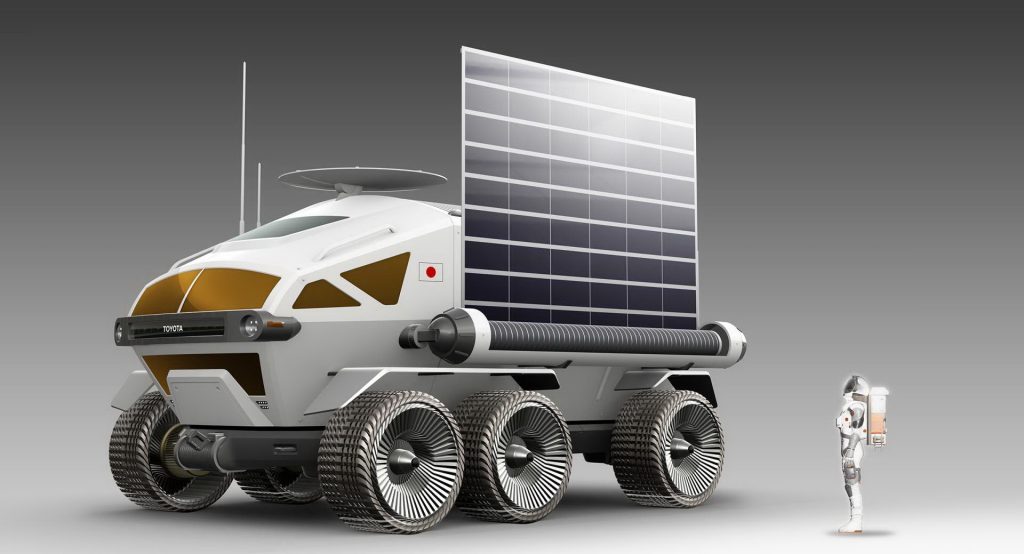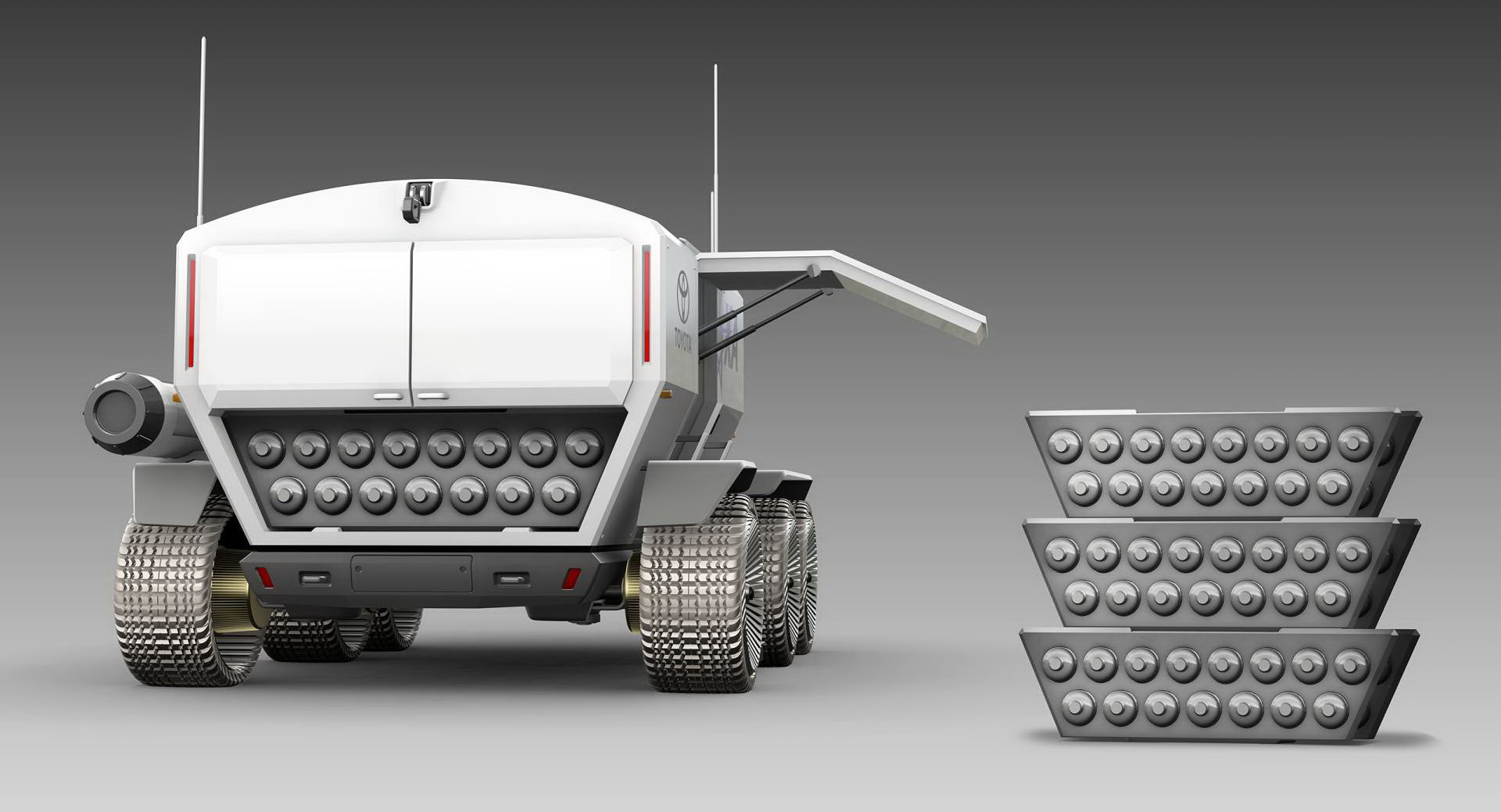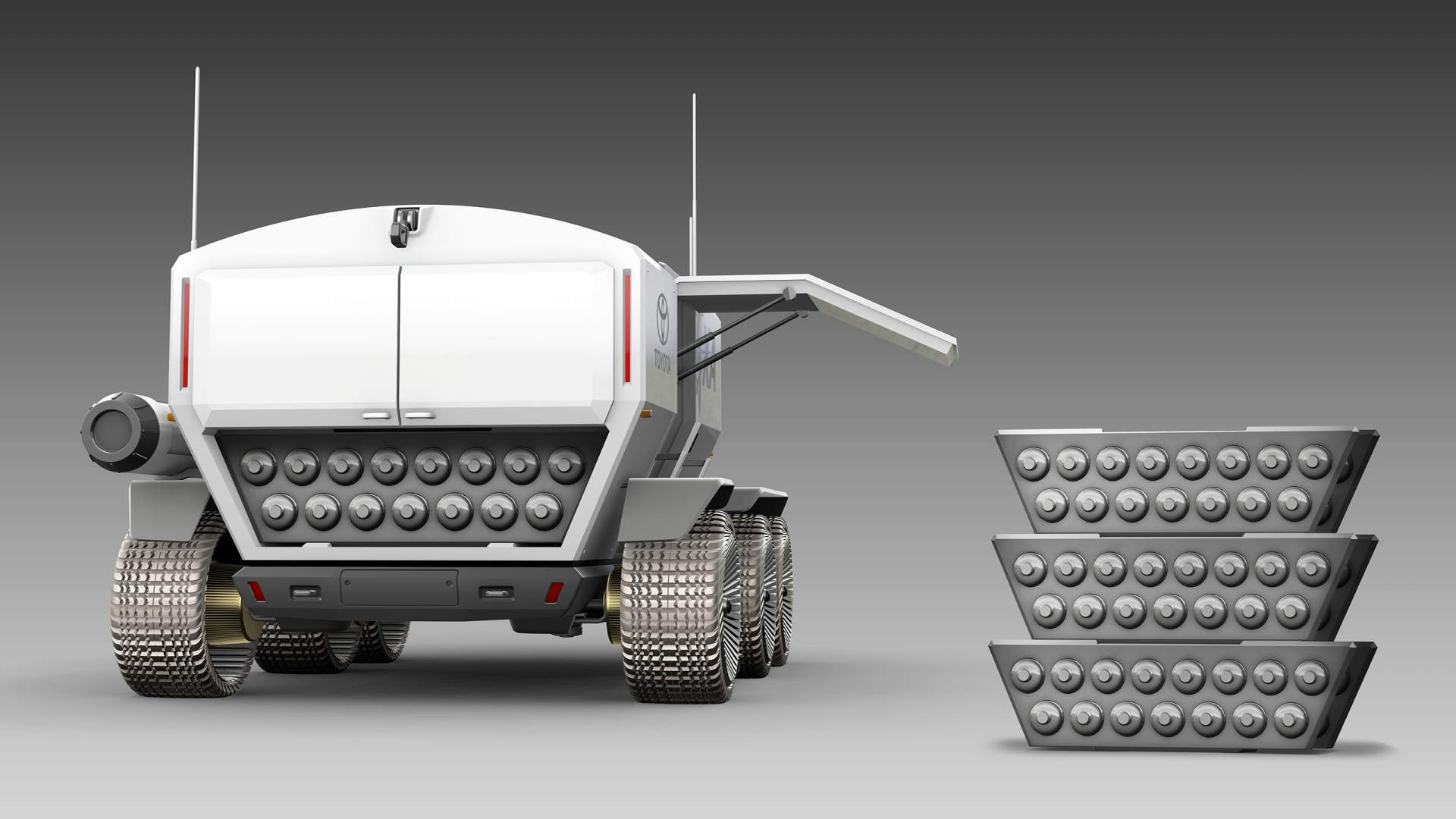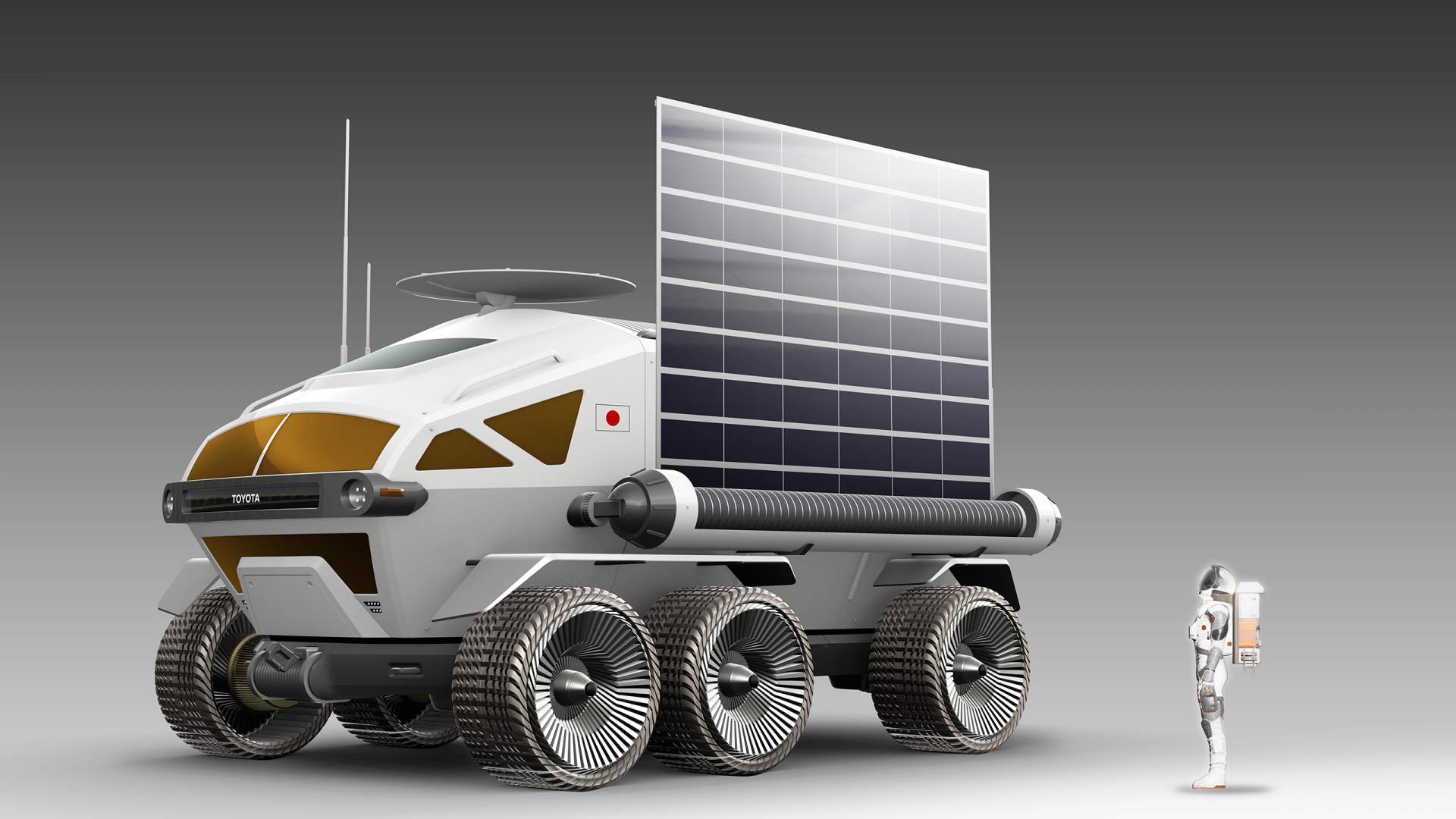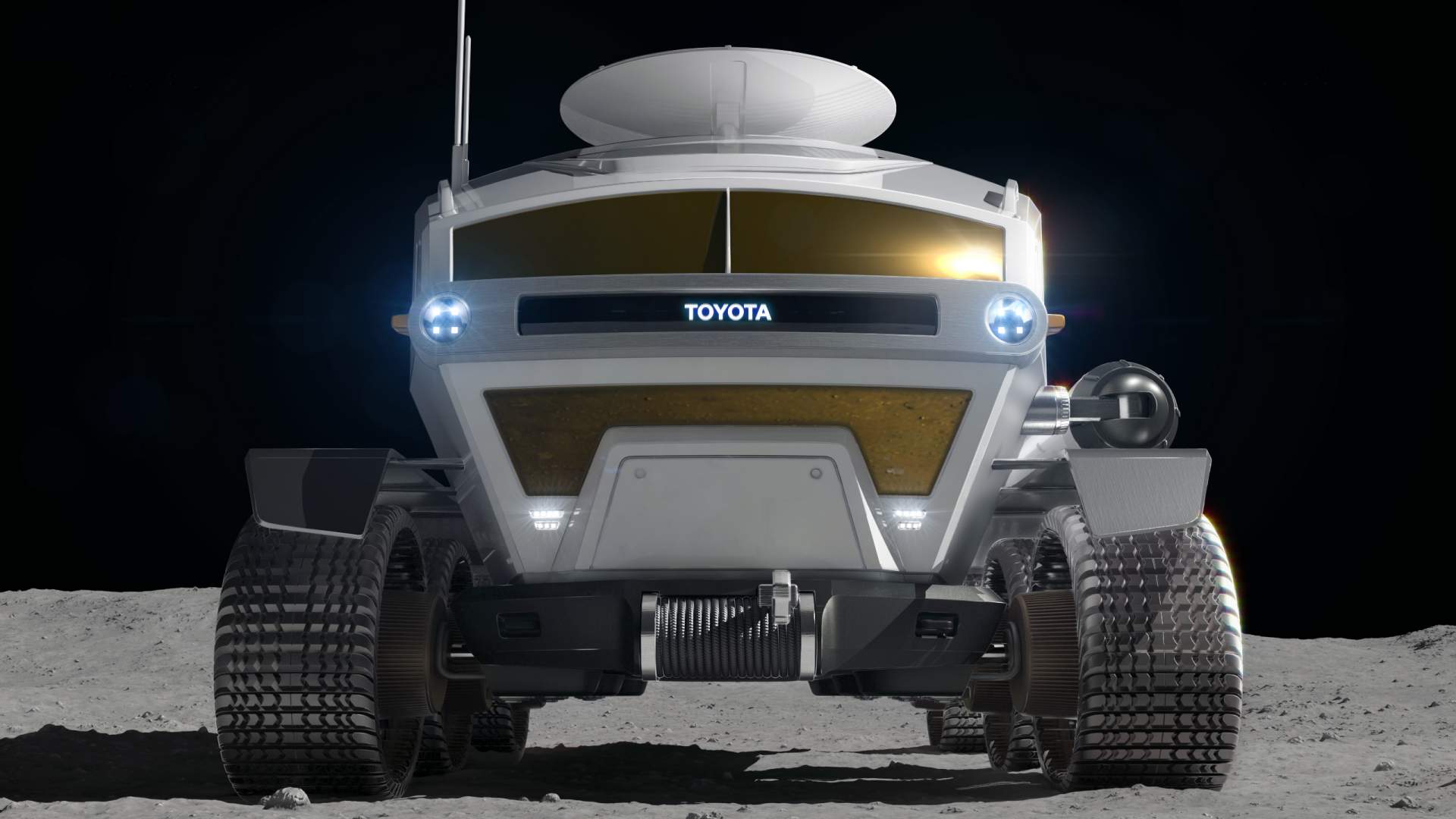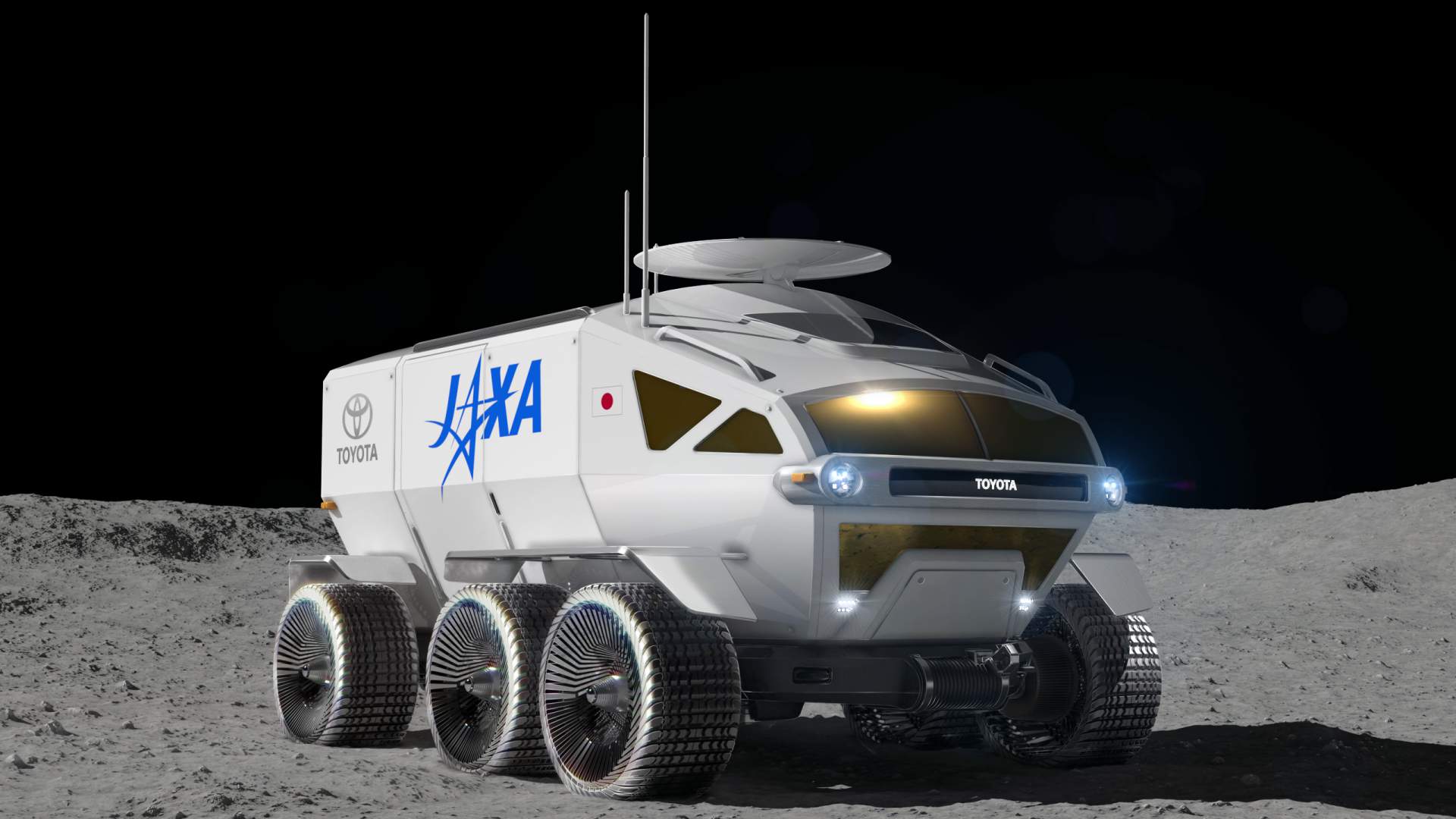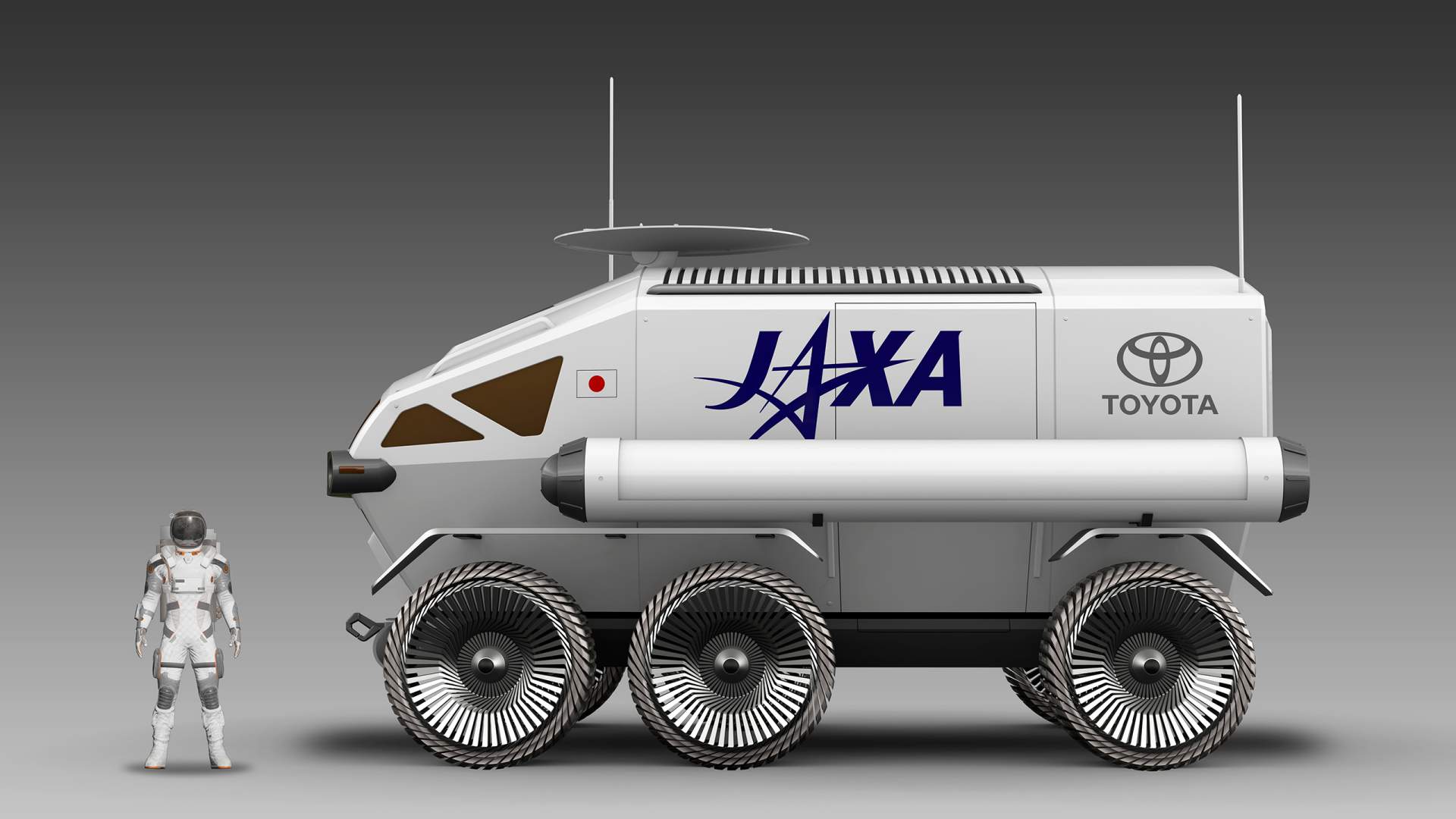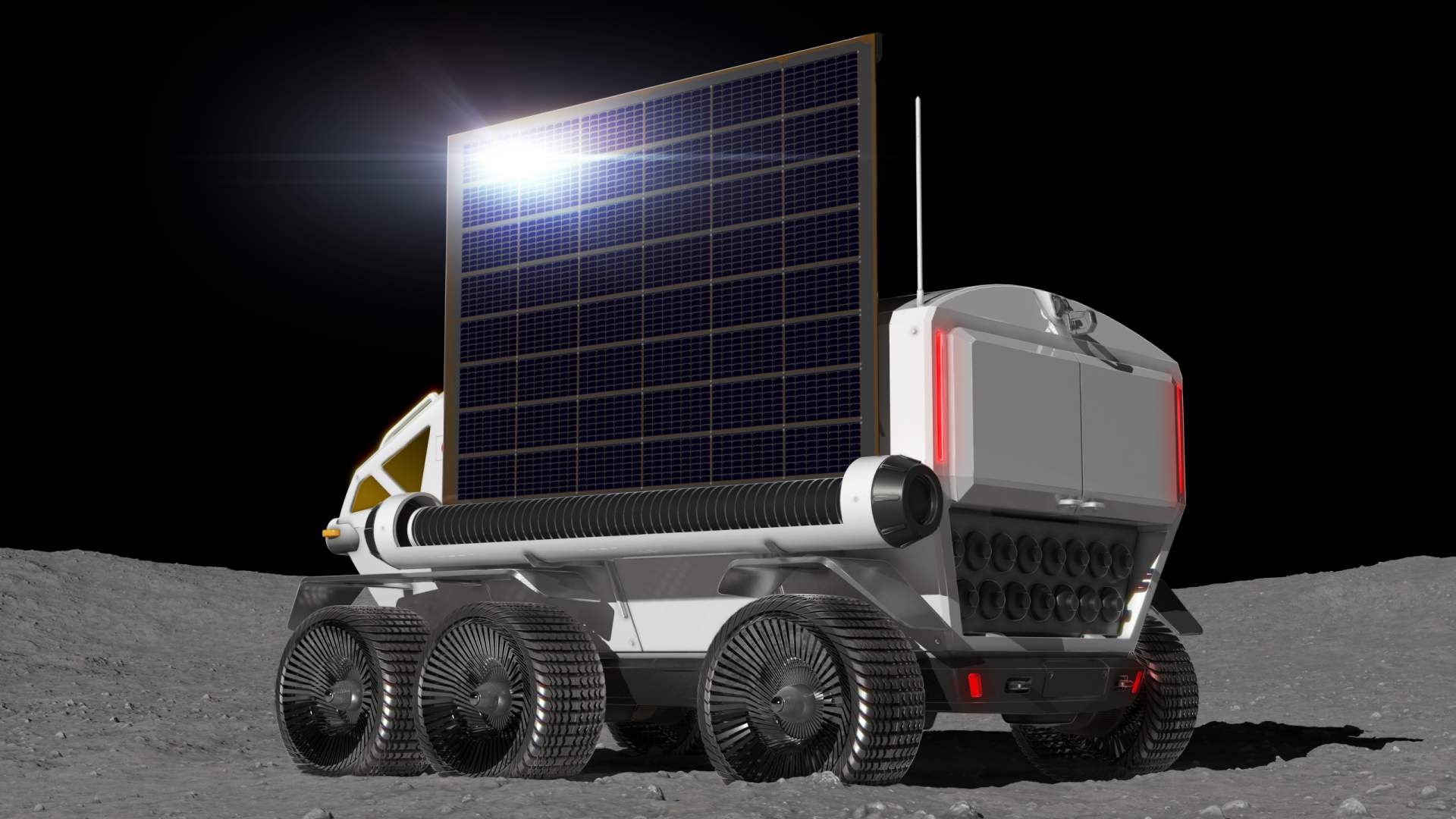Back in March, the Japan Aerospace Exploration Agency, or JAXA, teamed up with Toyota in its quest to send humans to the moon, because, in order to achieve its goals, it needed a manned pressurized lunar rover.
The design would utilize a fuel cell electric powertrain, offering a total lunar-surface cruising range of more than 6,200 miles (10,000 km), which is pretty amazing given the limited amount of energy/resources you can transport to the moon during the crew’s flight there.
JAXA VP Koichi Wakata previously stated that his agency would like to put a rover into space in 2029, with lunar exploration missions taking place in the 2030s.
Of course, you can’t send a vehicle to the moon without giving it a moniker, which is how the Japanese carmaker landed (pun intended) on Lunar Cruiser. This name was chosen because of the familiar feeling it offers the people involved in the project, as well as the recognition it will get from the general public thanks to it referencing Toyota’s Land Cruiser rugged SUV.
Read Also: Polaris Builds Lunar Rover Replica To Celebrate 50th Anniversary Of Apollo 11 Moon Landing
The Lunar Cruiser will have to tackle terrain that consists of craters, cliffs and hills and withstand radiation and temperatures that are much more harsh than anything on Earth. We already know that it’s going to measure 236.2 inches (6 meters) in length, 149.6 inches (3.8 meters) in height, with a 459.1 cu.ft (13 cubic meters) living space and will be able to take on two people on a regular basis, or four in an emergency situation.
Toyota and JAXA have also been discussing the possibility of a lunar-based future society pioneered by the Lunar Cruiser. These meetings focused on how the rover would become the starting point for a lunar surface-based establishment, as well as all the challenges with creating such a society.







